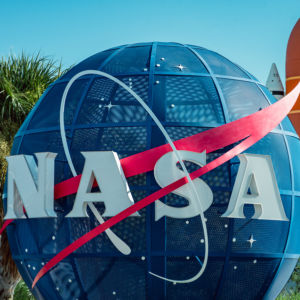Over the last several Congresses, many lawmakers have rightly pointed out the federal government’s addiction to wasteful programs and harebrained economic intervention schemes.
Sen. Joni Ernst, R-Iowa, for instance, recently awarded her monthly “squeal” award to the National Institutes of Health for supporting 10 cat studies — funded from grants totaling $1.3 million of taxpayer money — that concluded “classical music has an effect on cat behaviors.”
When it comes to wasteful spending at the National Aeronautics and Space Administration, however, it would seem that mum’s the word in Washington.
Despite systemic cost overruns and underwhelming performance, NASA will receive a historically high $21.5 billion from Congress in fiscal year 2019. Instead of reigning in the agency for busting spending caps, lawmakers are giving virtually every program within the agency a boost with scarcely a word in opposition.
Instead of astronomical spending increases, Congress should put aside blind affection for NASA and instead treat the agency for what it is: just another government agency prone to waste and abuse.
A recent Ars Technica analysis found that, despite nearly $50 billion that Congress has given the agency over the last 15 years to develop the tools needed for deep-space exploration, NASA has little to show for it. The report notes that NASA has thus far sporadically launched a handful of rockets (such as the Space Launch System and Orion), which were repeatedly delayed, went over budget and proved of little use. According to aerospace analyst Laura Forczyk, “SLS and Orion are political projects, not practical ones.” Unfortunately, political considerations seem par for the course in the realm of space policy.
Amid calls to privatize the International Space Station and save taxpayers $3 billion per year, even fiscal hawk Sen. Ted Cruz of Texas called ISS privatization backers “numbskulls,” reasoning that “as a fiscal conservative, … one of the dumbest things you can to is cancel programs after billions in investment when there is still serious usable life ahead.” Cruz is normally no fan of federal funding, but Texas is home to Houston’s Johnson Space Center, which oversees the Space Station.
Unlike other agencies, NASA is a rare bipartisan sacred cow that each party adores. Mixing space science with public dollars makes for truly strange planetary politics, such as the Republicans’ long-held fascination with Europa (Jupiter’s moon). When the Bush administration “promptly cancelled (a mission to) Pluto in favor of Europa” in 2000, Sen. Barbara Mikulski of Maryland dug in and repeatedly engineered pro-Pluto NASA budgets. The administration was finally cornered by National Academy of Science maneuvering, and approved funding for a mission to Pluto.
Rep. John Culberson of Texas has continued this push toward Europa, inserting language into appropriations bills that pushes up NASA’s mission to Jupiter’s ice-covered moon. The Trump administration seems similarly eager to direct NASA funding toward exploring Europa at the expense of his predecessor’s focus on asteroid probing. Attempts by Alan Stern (who leads NASA’s New Horizons mission to Pluto) and others to refocus the attention back toward Pluto and other faraway dwarf planets is the latest battle over funding and priorities.
The Trump administration’s larger ambition appears to be going back to the moon, for little apparent reason at a gargantuan cost. Buoyed by federal funding increases, NASA appears to be on board and recently asked the U.S. aerospace agency for help in developing landers that could get American astronauts back to the moon in a decade. This would come at an astounding cost of around $50 billion (around $57 billion today) above and beyond regular NASA funding over a 10-year period.
Instead of increasing NASA’s missions and “investing” in human exploration, lawmakers and the Trump administration should look to get more out of fewer taxpayer dollars. Lunar analysis, along with countless other scientific ventures, can be done at a fraction of the cost via unmanned missions to other worlds.
Cambridge Cosmology and astrophysics professor and astronomer royal Martin Rees rightly criticizes current manned proposals, pointing out, “The practical case (for human spaceflight) gets weaker and weaker with every advance in robotics and miniaturization.”
An Israeli nonprofit is poised to plant a lander on the moon funded by entrepreneurs, not taxpayers.
American companies, nonprofits and entrepreneurs could accomplish similar feats, freeing up NASA to build telescope and launch probes to other galaxies. But this shift in focus will simply never happen if lawmakers are too timid to call out America’s space agency. Continued spending like a drunken cosmonaut accomplishes little — at an astronomical cost.

